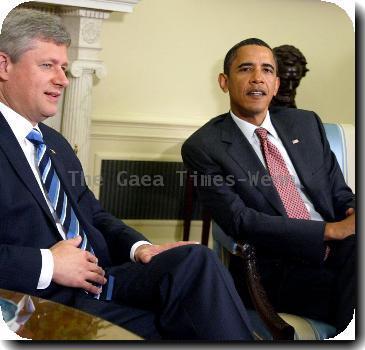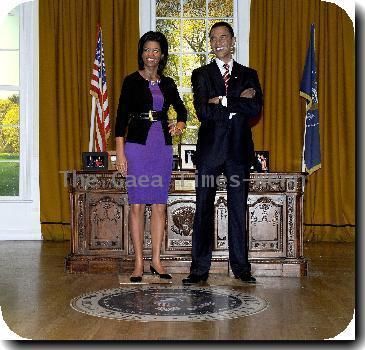BP says encouraged as trial run of Gulf well cap nears 48 hours with no sign of any new leak
By APSaturday, July 17, 2010
BP: No sign of leaks as capped well nears 48 hours
NEW ORLEANS — BP’s experimental cap was holding Saturday as the final hours ticked away in a two-day trial run to make sure it keeps oil from pouring into the Gulf of Mexico without blowing a new leak in the busted well.
Kent Wells, a BP PLC vice president, said engineers glued to an array of sensors were seeing no evidence of oil escaping into the water or the sea floor. Undersea robots patrolled the well site for signs of trouble.
A new breach underground was a major concern going into the trial, because oil breaking out of pipes in the bedrock would be harder to control and could endanger plans for a permanent plug.
“We’re feeling more comfortable,” Wells said on a morning conference call, but cautioned: “The test is not over.”
BP and the federal point man for the disaster, retired Coast Guard Adm. Thad Allen, have said they may decide to reopen the cap at least partly after the 48-hour trial period ends Saturday around 3:30 p.m. EDT, although it’s not clear what conditions would prompt them to do so.
Allen will make that call, Wells said, and could also decide to extend the trial run.
BP shut valves in the cap Thursday, stopping the flow of oil for the first time since the April 20 explosion on the BP-leased oil rig Deepwater Horizon killed 11 workers and unleashed the spill 5,000 feet below the sea.
With the cap working like a giant cork, scientists kept watch in case the buildup of pressure underground caused new leaks.
Pressure readings after 41 hours were 6,745 pounds per square inch and rising slowly, Wells said, below the 7,500 psi that would have reassured scientists the well was not leaking. He said pressure continued to rise by around 2 psi per hour, compared to a range between 2 and 10 psi BP and the government provided late Friday. A low pressure reading, or a falling one, could mean the oil is escaping.
Undersea cameras showed some activity midday Saturday. The robots passed a wand-like object back and forth, and appeared to be digging dirt-like debris out of a pipe. Meanwhile, a glowing globe appeared on the seafloor as bubbles swirled around.
It wasn’t immediately clear what the robots were doing, and to viewers, it was like watching a foreign movie without subtitles.
Wells said earlier Saturday that bubbles seen on video feeds were common underwater, but said they would take samples to make sure they aren’t gas escaping from the well.
The cap is designed to prevent oil from spilling into the Gulf, either by keeping it bottled up in the well or by capturing it and piping it to ships on the surface. It is not yet clear which way the cap will be used if it passes the pressure test.
Either way, the cap is a temporary measure until a relief well can be completed and mud and cement can be pumped into the broken well deep underground to seal it more securely.
BP is drilling two relief wells, one of them as a backup. Wells said work on the first one was far enough along that they expect to reach the broken well’s casing, or pipes, by late this month. Then the job of jamming it with mud and cement could take days “a number of days through a few weeks.”
Even with the cap holding, no one has declared victory. President Barack Obama on Friday cautioned the public “not to get too far ahead of ourselves.”
One mysterious development was that the pressure readings were not rising as high as expected.
Allen said late Friday that scientists were debating two possible reasons: The reservoir that is the source of the oil could be running lower three months into the spill, or there could be an undiscovered leak.
Even if the cap passes the test, more uncertainties lie ahead: Where will the oil already spilled go? How long will it take to clean up the coast? What will happen to the region’s fishermen? And will life on the Gulf Coast ever be the same again?
There was no end in sight to the cleanup in the water and on shore. Somewhere between 94 million and 184 million gallons have spilled into the Gulf, according to government estimates.
A flotilla of fishing boats operating as skimmers are scooping oil, but a giant Taiwanese vessel brought in from Portugal to help with the cleanup was called off Friday. The Coast Guard said the “A Whale” was just too big to maneuver around the patches of oil.
Large sections of the Gulf Coast have been closed to fishing and shellfish harvesting, although Louisiana this week reopened more than 80 percent of its waters for recreational fishing. On Saturday, anglers were out enjoying their restored freedom.
“It’s a blessing,” said Brittany Lawson, 22, a college student from River Ridge, La., as she fished off a pier with her boyfriend’s family on Grand Isle. “I just hope it’s not short-lived. I hope that the cleanup’s really serious and that … The cap holds and everything.”
Weber reported from Houston. Associated Press Writers Allen Breed, Vicki Smith and Jay Reeves contributed to this report.
Tags: Accidents, Barack Obama, Coastlines And Beaches, Energy, Environmental Concerns, Louisiana, New Orleans, North America, United States



